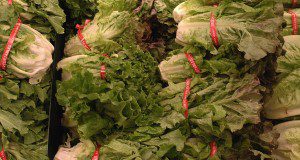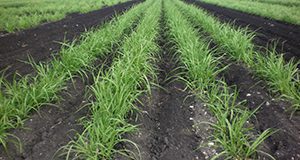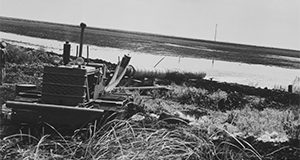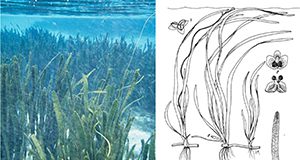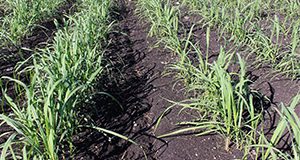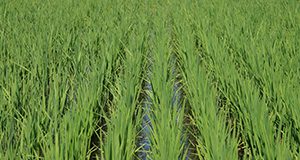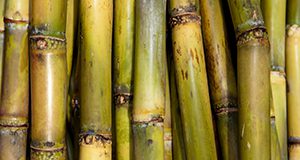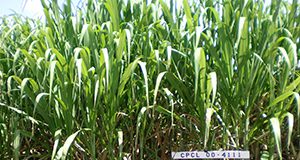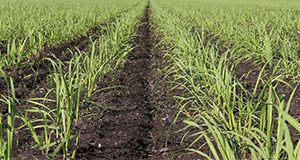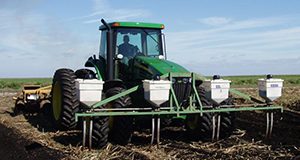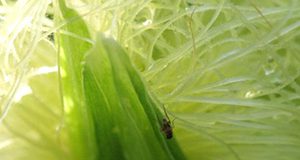Lettuce as a commercial crop is planted mainly in organic soils (“muck”) in the Everglades Agricultural Area (EAA) in south Florida. This updated 6-page publication of the UF/IFAS Horticultural Sciences Department presents a summary of previous cultivar releases by UF/IFAS as well as a description of cultivars currently planted in the EAA. Written by German Sandoya and Huangjun Lu.
https://edis.ifas.ufl.edu/hs1225
Tag: Everglades Research and Education Center–Belle Glade
Sugarcane Cultivar Descriptive Fact Sheet: CP 06-2400, CP 06-2042, and CP 07-2137
This 5-page fact sheet provides basic information and yield and disease information for CP 06-2400, CP 06-2042, and CP 07-2137 to assist growers in better selection and management of these cultivars. Written by Hardev Sandhu, Matt VanWeelden, and Wayne Davidson, and published by the UF/IFAS Agronomy Department, December 2019.
http://edis.ifas.ufl.edu/sc106
Rice Physiology, Products, and Critical Steps Associated with Postharvest Operations in Southern Florida
This 5-page document pertains to the UF/IFAS Extension programs related to rice production in the EAA and focuses on the steps that comprise postharvest processing of rice (drying, tempering, milling, and storage). It aims to highlight the physiology of the rice kernel and define some of the common terms used in the rice industry, elaborate on the steps in postharvest processing, and provide a brief overview of rice products and their market potential. Written by Jehangir H. Bhadha, Sangeeta Mukhopadhyay, Charlene Andrews, and Matthew VanWeelden, and published by the UF/IFAS Agronomy Department, September 2019.
http://edis.ifas.ufl.edu/ag438
Tapegrass, Eelgrass, or Wild Celery (Vallisneria americana Michaux): A Native Aquatic and Wetland Plant
This 5-page document describes the main features of tapegrass and summarizes important habitat requirements for its growth and restoration. Written by Mohsen Tootoonchi, Lyn A. Gettys, and Jehangir H. Bhadha, and published by the UF/IFAS Agronomy Department, September 2019.
http://edis.ifas.ufl.edu/ag437
Sugarcane Cultivar Descriptive Fact Sheet: CPCL 02-0926 and CP 05-1526
This new 5-page fact sheet provides basic information as well as yield and disease information for CPCL 02-0926 and CP 05-1526 to assist growers in selection and management of these cultivars. Written by Hardev Sandhu and Wayne Davidson, and published by the UF/IFAS Agronomy Department, February 2019.
http://edis.ifas.ufl.edu/sc105
Weed Management in Rice
Successful weed control is essential for economical rice production in Florida. This 6-page document discusses field sanitation and tillage, water management, and herbicides. Written by D. C. Odero and M. VanWeelden, and published by the UF/IFAS Agronomy Department, revised August 2018.
http://edis.ifas.ufl.edu/wg001
Elemental Sulfur Recommendations for Sugarcane on Florida Organic Soils
Micronutrient deficiencies can be important limiting factors in alkaline soils, with most micronutrients becoming less available for plant uptake as soil pH increases. This 6-page document is intended primarily for Florida sugarcane growers but may also be useful to researchers and others interested in sugarcane nutrition. It presents revised elemental sulfur recommendations for sugarcane grown on Florida organic soils along with supporting information. Written by J. Mabry McCray, and published by the UF/IFAS Agronomy Department, February 2019.
http://edis.ifas.ufl.edu/ag429
Potassium Fertilizer Recommendations for Sugarcane on Florida Organic Soils
Potassium is a primary plant nutrient that is required in large amounts by sugarcane. About 74% of the 400,000 acres of Florida sugarcane is grown on organic soils in the Everglades Agricultural Area. Potassium is not a component of organic matter and virgin Histosols contain very low concentrations of K, so release of K through mineralization of organic matter in these soils is not an adequate K source for plant growth. This 7-page document presents revised potassium fertilizer recommendations for sugarcane grown on Florida organic soils along with supporting information. Written by J. Mabry McCray, and published by the UF/IFAS Agronomy Department, February 2019.
http://edis.ifas.ufl.edu/ag428
Sugarcane Cultivars Descriptive Fact Sheet: CPCL 97-2730 and CPCL 00-4111
CPCL 97-2730 and CPCL 00-4111 are emerging sugarcane cultivars in Florida with rapid expansion in last couple of years. Both were ranked among the top 10 sugarcane cultivars in Florida in the 2015 Sugarcane Variety Census (VanWeelden et al. 2016) based on their total acreage. High biomass yield and better rust resistance greatly improve the chances of the cultivars’ adoption by growers. This fact sheet provides basic information and yield and disease information about CPCL 97-2730 and CPCL 00-4111 to assist growers in decision-making related to further expansion of these cultivars. Written by Hardev Sandhu and Wayne Davidson, and published by the UF/IFAS Agronomy Department, May 2017.
http://edis.ifas.ufl.edu/sc103
Sugarcane Cultivars Descriptive Fact Sheet: CP 96-1252, CP 01-1372, and CP 00-1101
Sugarcane cultivars CP 96-1252, CP 01-1372, and CP 00-1101 are the top three commercial sugarcane cultivars in Florida, occupying more than 43% of total sugarcane area. These cultivars are developed through the cooperative agreement among the United States Department of Agriculture (USDA), Canal Point, the UF/IFAS Everglades Research and Education Center in Belle Glade, and the Florida Sugar Cane League. This 4-page fact sheet provides information on the cultivars, their parentage, flowering, cold tolerance, yields, disease response, and major growth or yield issues. Written by Hardev Sandhu and Wayne Davidson, and published by the UF Agronomy Department, December 2016.
http://edis.ifas.ufl.edu/sc102
Sequential Sampling for Wireworms (Coleoptera: Elateridae) at Sugarcane Planting
In the Everglades Agricultural Area of Florida, where sugarcane is planted on around 410,000 acres annually, wireworms are the most economically important insect pests of newly planted sugarcane. This 3-page fact sheet written by Matthew T. VanWeelden and Ron Cherry and published by the Department of Entomology and Nematology provides a step-by-step plan to determine whether an application of soil insecticide may be needed to control wireworms. This publication is also a part of the Florida Sugarcane Handbook, an electronic publication of the Agronomy Department.
http://edis.ifas.ufl.edu/in1143
Cob Flies, Megaselia spp. (Diptera: Phoridae), in Sweet Corn
Phorid flies (Diptera), also known as humpback flies or scuttle flies for their appearance and behavior, are an extremely diverse group of flies that are saprophagous (feed on decaying organic matter), parasitic, or phytophagous (feed on plants). Within the Phoridae family, the genus Megaselia is also extremely diverse, with more than 1400 described species, many very similar in appearance. The name “cob fly” was given to a Megaselia spp. that attacked corn in Texas. This 5-page fact sheet written by David Owens, Gregg S. Nuessly, Robert Beiriger, and Nicholas Larsen and published by the Department of Entomology and Nematology describes the distribution of this pest, ways to distinguish it from other similar corn ear pests, its life cycle, the damage it causes, and some strategies for management.
http://edis.ifas.ufl.edu/in1144
Nitrogen Fertilizer Recommendations for Sugarcane Production for Sugar on Florida Sand Soils
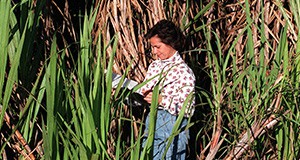
Sands used in sugarcane production in Florida have low levels of organic matter, silt, and clay, and they provide little N through mineralization of organic matter and possess a low capacity for N retention as a result. Because these soils are highly leachable, N must be managed well to ensure adequate nutrition for the crop as well as protection of groundwater. This new 4-page fact sheet is part of the Sugarcane Handbook, and it discusses sand soils used in sugarcane production, sugar yield response to nitrogen, and revised nitrogen recommendations. Written by J. Mabry McCray, Kelly T. Morgan, and Les Baucum, and published by the UF Agronomy Department, February 2016.
http://edis.ifas.ufl.edu/sc101
Effects of Harvest Method on Microclimate in Florida Sugarcane
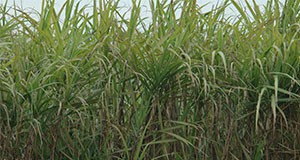 The production systems for sugarcane include either green cane or burnt cane harvesting operations. Sugarcane in Florida is typically harvested with burnt cane mechanical harvesting, but there is a growing interest to better understand the effects of green cane harvest residue “trash blankets” on microclimate conditions for sugarcane growing on both organic and mineral soils of Florida, so the authors conducted a three-year study to determine the effects of each harvest method on microclimate within the surface soil profile and at a 10 cm height from the soil surface. Results are presented in this 4-page fact sheet written by Hardev Sandhu, Maninder Singh, Robert Gilbert, Kelly Morgan, Ronald Rice, Leslie Baucum, James Shine Jr., and Mike Irey, and published by the UF Department of Agronomy, April 2015. (UF/IFAS Photo: Josh Wickham.)
The production systems for sugarcane include either green cane or burnt cane harvesting operations. Sugarcane in Florida is typically harvested with burnt cane mechanical harvesting, but there is a growing interest to better understand the effects of green cane harvest residue “trash blankets” on microclimate conditions for sugarcane growing on both organic and mineral soils of Florida, so the authors conducted a three-year study to determine the effects of each harvest method on microclimate within the surface soil profile and at a 10 cm height from the soil surface. Results are presented in this 4-page fact sheet written by Hardev Sandhu, Maninder Singh, Robert Gilbert, Kelly Morgan, Ronald Rice, Leslie Baucum, James Shine Jr., and Mike Irey, and published by the UF Department of Agronomy, April 2015. (UF/IFAS Photo: Josh Wickham.)
http://edis.ifas.ufl.edu/sc100
Producing biochar using a custom designed Top-lit Updraft (TLUD) gasifier
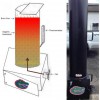 Biochar can be produced in a wide variety of ways; some are complex, while others are relatively simple. Researchers at the University of Florida Everglades Research and Education Center in Belle Glade, FL, designed and built a top-lit updraft (TLUD) gasifier that can generate biochar from locally acquired feedstock. This 4-page fact sheet describes its design and evaluates the biochar recovery of four locally available feedstocks. Written by Jehangir H. Bhadha, Stephen Jennewein, Julio Sanchez, and Timothy A. Lang, and published by the UF Department of Soil and Water Science, September 2014.
Biochar can be produced in a wide variety of ways; some are complex, while others are relatively simple. Researchers at the University of Florida Everglades Research and Education Center in Belle Glade, FL, designed and built a top-lit updraft (TLUD) gasifier that can generate biochar from locally acquired feedstock. This 4-page fact sheet describes its design and evaluates the biochar recovery of four locally available feedstocks. Written by Jehangir H. Bhadha, Stephen Jennewein, Julio Sanchez, and Timothy A. Lang, and published by the UF Department of Soil and Water Science, September 2014.
http://edis.ifas.ufl.edu/ss626
Screening Methods for Southern Chinch Bug Resistance in St. Augustinegrass
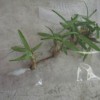 Relying on insecticides for southern chinch bug control raises turfgrass maintenance costs, increases the risk that insects will develop resistance to insecticides, and may damage the environment. Host-plant resistance is a relatively sustainable and environmentally sound option for management of this damaging insect pest.To develop new resistant varieties, plant materials must be screened for new sources of southern chinch bug resistance. Screening methods to measure host plant resistance of St. Augustinegrass to southern chinch bugs have measured nymphal and/or adult survival in so-called no-choice tests in which only the experimental plant materials were provided. There are four types of screening methods described in this 4-page fact sheet was written by Huangjun Lu and Ronald Cherry, and published by the UF Department of Entomology and Nematology, October 2014. (Photo credit: Long Ma, UF/IFAS Extension)
Relying on insecticides for southern chinch bug control raises turfgrass maintenance costs, increases the risk that insects will develop resistance to insecticides, and may damage the environment. Host-plant resistance is a relatively sustainable and environmentally sound option for management of this damaging insect pest.To develop new resistant varieties, plant materials must be screened for new sources of southern chinch bug resistance. Screening methods to measure host plant resistance of St. Augustinegrass to southern chinch bugs have measured nymphal and/or adult survival in so-called no-choice tests in which only the experimental plant materials were provided. There are four types of screening methods described in this 4-page fact sheet was written by Huangjun Lu and Ronald Cherry, and published by the UF Department of Entomology and Nematology, October 2014. (Photo credit: Long Ma, UF/IFAS Extension)
http://edis.ifas.ufl.edu/in1050
New Sources of Southern Chinch Bug Resistance in St. Augustinegrass
 Currently, Captiva is the only chinch bug-resistant variety of St. Augustinegrass grown on sod farms in Florida. But since these pests have previously overcome their resistance to Floratam, it is highly probable that they will do the same with Captiva in the future. It is also desirable to have resistant varieties available with different agronomic qualities such as shade tolerance or drought tolerance. This 4-page fact sheet reports the results of a preliminary screening to detect resistance to chinch bugs, conducted at the UF/IFAS Everglades research station on 36 untested St. Augustinegrass lines. Written by Huangjun Lu and Ronald Cherry, and published by the UF Department of Horticultural Sciences, July 2014.
Currently, Captiva is the only chinch bug-resistant variety of St. Augustinegrass grown on sod farms in Florida. But since these pests have previously overcome their resistance to Floratam, it is highly probable that they will do the same with Captiva in the future. It is also desirable to have resistant varieties available with different agronomic qualities such as shade tolerance or drought tolerance. This 4-page fact sheet reports the results of a preliminary screening to detect resistance to chinch bugs, conducted at the UF/IFAS Everglades research station on 36 untested St. Augustinegrass lines. Written by Huangjun Lu and Ronald Cherry, and published by the UF Department of Horticultural Sciences, July 2014.
http://edis.ifas.ufl.edu/hs1239
Managing Against the Development of Herbicide-Resistant Weeds: Sugarcane
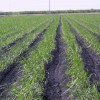 Profitable sugarcane production in Florida requires effective weed management. Herbicides provide an efficient and cost-effective means of weed control, but excessive use of a single herbicide or group of herbicides with the same mechanism of action has resulted in the development of herbicide-resistant weeds. In crops such as sugarcane where a limited number of herbicides are registered, the loss of a single effective herbicide can be very costly. Thus, it is critical to manage herbicides in order to prevent or delay the development of herbicide-resistant weed populations. This 4-page fact sheet lists herbicides by group number, mechanism of action, chemical family, common name, and trade name. Written by D.C. Odero, B.A. Sellers, J.A. Ferrell, and G.E. MacDonald, and published by the UF Department of Agronomy, October 2014.
Profitable sugarcane production in Florida requires effective weed management. Herbicides provide an efficient and cost-effective means of weed control, but excessive use of a single herbicide or group of herbicides with the same mechanism of action has resulted in the development of herbicide-resistant weeds. In crops such as sugarcane where a limited number of herbicides are registered, the loss of a single effective herbicide can be very costly. Thus, it is critical to manage herbicides in order to prevent or delay the development of herbicide-resistant weed populations. This 4-page fact sheet lists herbicides by group number, mechanism of action, chemical family, common name, and trade name. Written by D.C. Odero, B.A. Sellers, J.A. Ferrell, and G.E. MacDonald, and published by the UF Department of Agronomy, October 2014.
http://edis.ifas.ufl.edu/sc077
Sugarcane Orange Rust
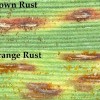 In June 2007, rust symptoms were observed on sugarcane cultivar CP80-1743 about six miles east of Belle Glade, Florida. The disease was confirmed as orange rust of sugarcane. It is hypothesized that rust spores were blown into the region as a disperse spore cloud from an unknown source rather than spread from a single or several small focal points. This 7-page fact sheet was written by P. Rott, S. Sood, J. C. Comstock, R. N. Raid, N. C. Glynn, R. A. Gilbert, and H. S. Sandhu, and published by the UF Department of Agronomy, May 2014.
In June 2007, rust symptoms were observed on sugarcane cultivar CP80-1743 about six miles east of Belle Glade, Florida. The disease was confirmed as orange rust of sugarcane. It is hypothesized that rust spores were blown into the region as a disperse spore cloud from an unknown source rather than spread from a single or several small focal points. This 7-page fact sheet was written by P. Rott, S. Sood, J. C. Comstock, R. N. Raid, N. C. Glynn, R. A. Gilbert, and H. S. Sandhu, and published by the UF Department of Agronomy, May 2014.
http://edis.ifas.ufl.edu/sc099
Lettuce Cultivars Suitable for Use in Southern Florida
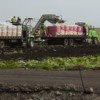 Lettuce is an economically important winter vegetable crop in Florida, with approximately 11,000 acres in production and a farm gate value of $40–$50 million annually. Florida lettuce production occurs mainly in the Everglades Agricultural Area (EAA). In recent years, research scientists at the University of Florida conducted variety trials that included the major cultivars of romaine and iceberg types. These trials were conducted on organic soil in the Everglades Agricultural Area and the IFAS-recommended practice was followed. This 3-page fact sheet describes lettuce cultivars suitable for production on organic soils in the EAA of southern Florida. Written by Huangjun Lu, and published by the UF Department of Horticultural Sciences, October 2013.
Lettuce is an economically important winter vegetable crop in Florida, with approximately 11,000 acres in production and a farm gate value of $40–$50 million annually. Florida lettuce production occurs mainly in the Everglades Agricultural Area (EAA). In recent years, research scientists at the University of Florida conducted variety trials that included the major cultivars of romaine and iceberg types. These trials were conducted on organic soil in the Everglades Agricultural Area and the IFAS-recommended practice was followed. This 3-page fact sheet describes lettuce cultivars suitable for production on organic soils in the EAA of southern Florida. Written by Huangjun Lu, and published by the UF Department of Horticultural Sciences, October 2013.
http://edis.ifas.ufl.edu/hs1225
